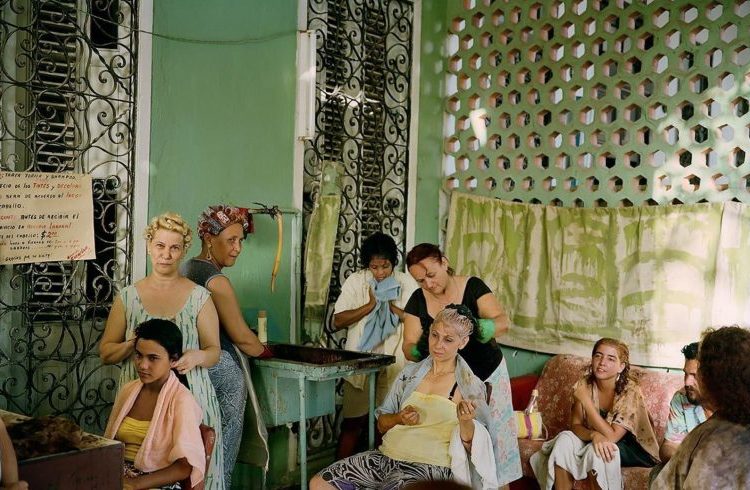The Cuba of the “Special Period,” as the deep economic crisis into which the island fell after the collapse of the socialist camp in the 1990s is euphemistically known, is the one captured by U.S. photographer Tria Giovan with her camera and which now appears in the book The Cuba Archive.
For the artist living in New York, this 167-page book with landscape format and in full color which she presented in Miami last weekend is “a historic documentation” of “one of Cuba’s most difficult moments,” she said to EFE in an interview.

The Cuba Archive is the result of six years of work. It includes images of the 12 trips she made to Cuba between 1990 and 1996, during which she visited spots never photographed before by a foreigner because of the lack of an apparent tourist attraction.
“It also includes intimate and informal moments,” Giovan indicated, very excited about presenting her work in Miami, the city outside Cuba where more Cubans live.
“I know that during those years it was very difficult for an American to travel to Cuba, that’s why I feel lucky to have been allowed to be present during the moment of the drop in the country’s economy,” she indicated.
“I got researcher visas, what I didn’t say then was what type of research I was going to do,” said Giovan, who grew up in the U.S. Virgin Islands and always wanted to visit the “socialist” Caribbean context.

A spoiled view with the camera, but with an invariable expression from the moment in which she asks for permission until she presses the shutter, leaves on these pages a feeling of loneliness and naivety at the same time, which the author conscientiously worked.
“Everybody was waiting on lines to get something. The buses were full of people. For me it was easier to move around because I had dollars,” indicates Giovan, who visited innumerable towns and provinces in the interior of Cuba with a friend, also a photographer, on a rented car driven by them.
“We gave them lifts. We acted as taxi drivers countless times because we were ashamed of the facilities we had,” she sums up.
The book, prepared by the Italian Damiani publishing house, captures from the desolation of a landscape to popular dances and Sunday clothes that did not escape the “daring” eye of this professional photographer.
Giovan captured the possibly last propaganda billboards that the communist government used and still uses to extol its social and political system, leaving a fine irony in images like the one that reads: “We owe today everything we are to the revolution and socialism.”
A dilapidated Cuba, faded and solitary is the one Giovan gives us, not without writing a dedication on the first page: “For the future of Cuba.”
The author likes to think that many of the girls who appear in the book with their family or alone “today must be women and we don’t know if they are still there.”
“I scanned everything. The negatives deteriorated and I had to revise them to conserve them. That’s why it’s called ‘Archive.’ I originally found 25,000 photograms. Afterwards I polished that out and I stayed with 1,000 scanned pictures, and later 600.”

“In the end I stayed with 200 to finish in 125, which is what the book contains,” Giovan indicates.
She did the “rescuing” work 20 years later and this was due, as she recalls, to news on Cuba she saw on television.
“I remember that everything began on a very cold night in New York. I looked at the boxes in my home that said ‘Cuba 1990s’ and I started to revise the negatives. I found things that I hadn’t seen before. My sense had matured, I started noticing photographs I had never seen,” she remembers.
The author, who right now is participating with her work in the collective photo exhibit “Cuba Is,” in the Annenberg Space for Photography of Los Angeles, California, would love it if her book were presented in Cuba.
“Now I see it as possible. I would like that. I know that in relation to Cuba there are people who have very strong feelings and I can understand them. I hope it won’t bother the Cuban government because there are no bad feelings in this project,” Giovan affirms.
The artists presented this Sunday her “polished” archive in the Books & Books store, in Coral Gables, a city in the vicinity of Miami, where she signed copies and revealed details, such as that she worked with color film with the intention of collecting “faded” facades and posters.

TN: Quotes were retranslated from the Spanish.
EFE / OnCuba










